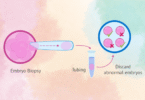Gua sha, old-healing technique which is rooted in Chinese medicine, has grown in popularity in recent years due to its potential health benefits. promote circulation, release stress, and improve general well being, this technique includes gently scraping the skin’s surface with a tool with a smooth edge. We will look at the wonderful benefits of gua sha as we go farther while also exploring any potential side effects.
Good Read: Top Skincare Hacks for Healthy and Glowing Skin
What Is Gua Sha?
Gua sha is a natural, alternative therapy which involves scrubbing your skin with a massage tool to increase circulation. These traditional Chinese healing techniques may provide a novel way to improve health by tackling problems including chronic pain. In gua sha, a technician uses short or long strokes to scrape your skin in order to activate the soft tissue’s microcirculation, which boosts blood flow. They apply these strokes with a tool known as a gua massage tool, which has a smooth edge. The massage therapist uses the tool to continuously scrape your skin downward after applying massage oil to it.
Gua sha is meant to address the body’s chi, or stagnant energy, which practitioners say may be the cause of inflammation. Many illnesses connected to chronic pain have inflammation as their underlying cause. It is believed that rubbing the skin’s surface might assist break up this energy, lessen inflammation, and promote healing.
Gua sha is typically used on the back, buttocks, neck, arms, and legs of a person. It is even applied to the face as a gentle facial technique. To figure out how much force you can withstand, your technician may start out gently before progressively increasing the pressure.
History Of Gua Sha
Ancient Chinese have traditionally employed gua sha massage as a form of folk therapy. The procedure was scientifically computed into significant medical records during the Ming Dynasty, which lasted from 1368 to 1644. Gua Sha has a history that extends back around 700 years to the Ming Dynasty, however its origins are thought to be considerably older.
GuaSha has been recorded historically since the Palaeolithic age. People were massaged with hands, stones, or common household items like coins or tins when they became unwell or got into a coma to cope with the symptoms and side effects of their illnesses.
What Are The Benefits Of Gua Sha?
The benefits of gua sha have little evidence. What the science says is as follows.
Hepatitis b
A viral infection called hepatitis B damages the liver and results in scarring and liver inflammation. According to research, gua sha may lessen chronic liver inflammation. In one case study, a man with elevated liver enzymes—a sign of liver inflammation—was followed. He received gua sha, and after 48 hours of treatment, his liver enzymes began to fall. There is ongoing research.
Migraines
According to a study, gua sha demonstrated to help reduce migraine headaches when used as part of a 14-day inpatient treatment. But for experts to prove this, more studies and clinical trials are required.
Tourette’s Syndrome
Your nervous system is impacted by this disorder, which results in “tics,” or sudden twitches. In one study, a guy with Tourette’s syndrome underwent acupuncture, herbs, lifestyle modifications, and gua sha once a week for 35 weeks. He noticed a 70% improvement in his symptoms. To prove the links, however, researchers need more evidence.
Breast Fullness
Breasts may overfill with milk if you breastfeed. They could become painful and swollen as a result of this. In one study, gua sha treatment was given to women whose breast fullness made it difficult for them to breastfeed. This treatment continued for a few weeks after the ladies returned home. These women experienced an improvement in their ability to breastfeed when their pain subsided.
Perimenopausal Symptoms
Menopausal women may experience irregular periods, hot flashes, sleep problems, and mood swings. In one study, women who received gua sha once per week for eight weeks saw an improvement in those symptoms. Researchers are currently attempting to determine whether and how it works.
Neck Pain
48 people with chronic neck pain were divided into two equal groups for one clinical trial. The persons who had gua sha treatment saw significant pain relief for a short period of time after a week. Regarding gua sha’s potential impact on neck pain, experts are undecided.
Potential Side Effects Of Gua Sha
Capillaries, which are small blood vessels close to the skin’s surface, burst after receiving gua sha. This results in the distinctive sha bruises, which are red or purple in color. It normally takes a few days or a week for bruises to heal, and they may be tender during this time. To ease pain and minimize swelling, people can take an over-the-counter painkiller like ibuprofen. One must take precautions not to bump the burnished area and should shield it. Inflammation can be lowered and pain can be alleviated by using an ice pack.
Although it is not recommended, there is a chance that skin break could occur during a gua sha treatment. A gua sha practitioner must properly sterilize their tools in between treatments because broken skin increases the risk of infection.
Not everyone is a good fit for gua sha. Those who shouldn’t receive gua sha include:
- Who suffer from medical issues that impact the veins or skin
- Who bleeds readily.
- Who takes blood-thinning medication.
- Suffer from deep vein thrombosis.
- Who has a wound that hasn’t totally healed, an infection, a tumor, etc.
- Who have a pacemaker or internal defibrillator implanted.
Final Words
Numerous illnesses and disorders are treated with gua sha, but just a few particular medical conditions have been the subject of research. Gua sha’s efficacy as a treatment still requires more evidence to be shown. Although gua sha has many benefits, not everyone is a good fit for it. Speaking with your doctor before starting treatment shouldn’t be disregarded or underestimated. Gua sha could appear simple and trouble-free, but it’s best performed and directed by a qualified and experienced practitioner to ensure safety and effectiveness.





